Language
- Deutsch
- English
- Español
- Français
- Italiano
- Nederlands
- Português
Currency
- AUD Australian Dollar
- CAD Canadian Dollar
- EUR Euro
- GBP Pound Sterling
- SGD Singapore Dollar
- USD US Dollar
- ZAR Rand

Zimbabwe is home to a kingdom dating back to the 11th century, deep caves that are filled with silent pools explored by US Navy divers, the world's biggest artificial lake by volume, and the planet's most colossal waterfall. This alluring landlocked country is the ideal safari destination for intrepid travellers and is famous for dramatic landscapes; endless natural beauty; a near-perfect climate; warm and friendly people; and some of the best wildlife encounters on Earth.
Zimbabwe boasts two World Heritage Sites – Victoria Falls and Mana Pools – but there’s so much more to experience: Hwange’s plethora of wildlife, Matobo’s majestic leopards, the dramatic remoteness of Gonarezhou, and the gorgeous sunsets over Lake Kariba. Wherever you decide to go on safari, Zimbabwe will not disappoint.
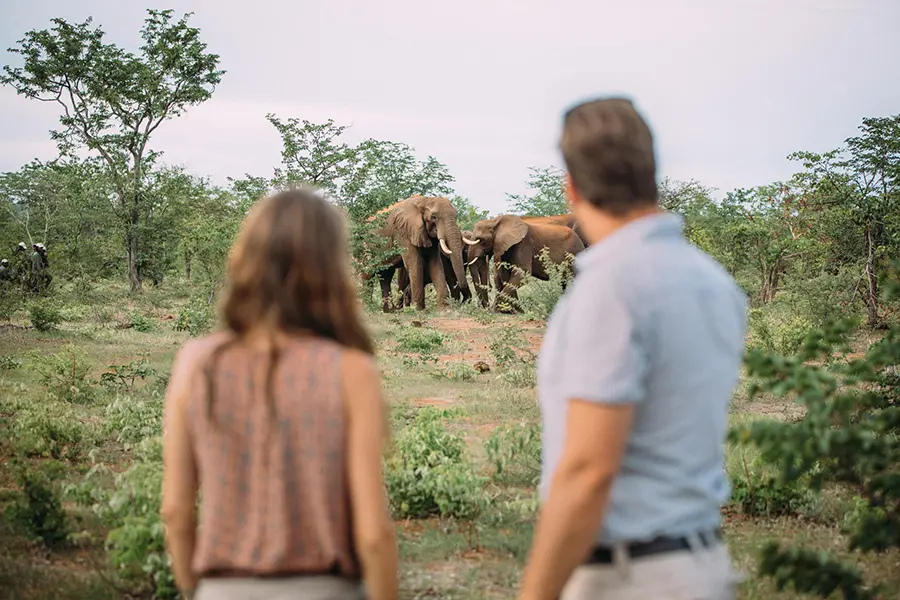
It is the country's wonderful wildlife, the extraordinary level of guiding and varied national parks – along with Victoria Falls – that are most famous, and why thousands upon thousands of safari lovers flock here every year. The country takes conservation seriously and has a network of sizable reserves.
Zimbabwe's safari guides are considered among the best in the world thanks to their extremely rigorous training. It takes at least five years to complete the course, which involves everything from learning all the Latin names of birds, plants, insects and animal species to basic first aid, advanced driving skills and weapons training. It is so tough that it is estimated that in some years only five percent of the incoming class make it to the final written exams. This exceptional knowledge of and passion for the bush, combined with the fun-loving Zimbabwean sense of humour, put Zimbabwean guides at the top of their field.
The country's commitment to conservation also makes it part of two gargantuan cross-border parks. The Kavango-Zambezi Transfrontier Conservation Area (KAZA) is the size of France and includes Victoria Falls, Hwange and Lake Kariba. The Great Limpopo Transfrontier Park is the size of the Netherlands or Taiwan and takes in Gonarezhou. These transfrontier areas show close cooperation between Southern African countries like Zimbabwe, South Africa, Botswana and Namibia to preserve natural and ancient migratory channels for animals and maintain their traditional habitats.
In addition to game drives, nature walks and water-based safaris in the national parks, Zimbabwe offers a lot of other outdoorsy activities for adventurous travellers.
No matter where you go in Zim – from the rush of Vic Falls to the dry bush of Hwange – you will always have the Milky Way above you, the sun to greet you in the morning and the incredible hospitality of Zimbabweans to look forward to.
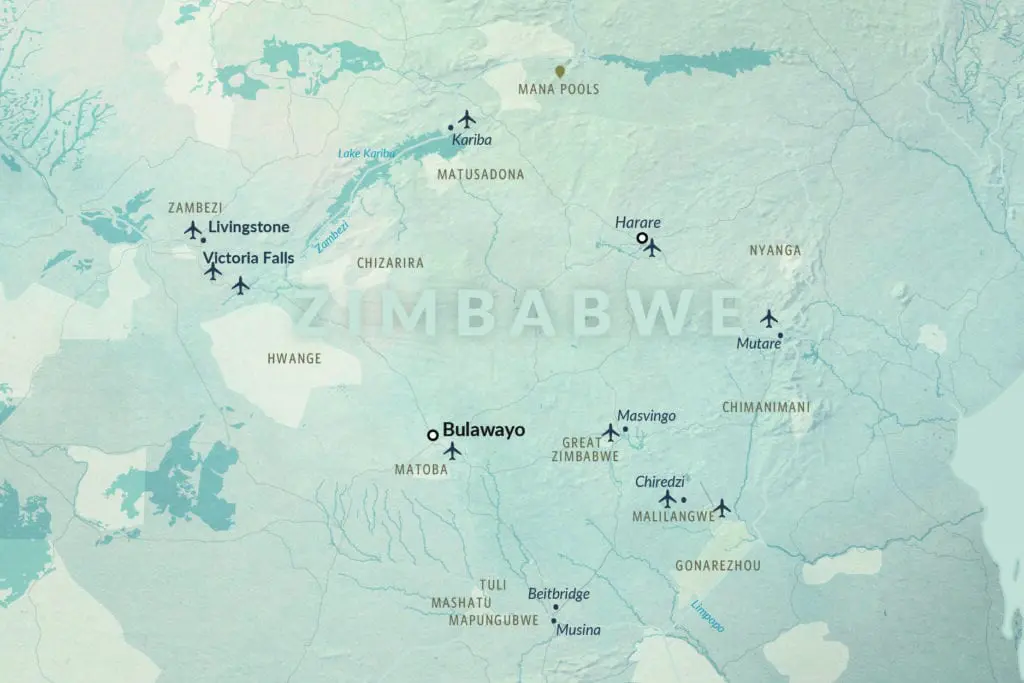
The most famous and visited park is Hwange (pronounced ‘wang-gee'), which spans over 14 600 square kilometres / 5 850 square miles, and provides a haven for 107 mammal species and more than 400 recorded types of birds, many of which flock to Mandavu Dam during the mid-year dry season. If it's elephants you want to see (there are between 45 000 and 60 000 living in Hwange), then the area around Nyamandhlovu Pan is the place to be – it literally means, ‘Meat of the Elephant'. Hwange is most commonly combined with Victoria Falls as they are closest to each other. This is probably the best place to see the Big 5 – elephant, rhino, leopard, lion and buffalo – in Zim, although rhinos are only seen on rare occasions.
This is supposedly the location of Ophir, the biblical land from where King Solomon got ivory, gold and exotic birds. Today, it is a protected area where highly endangered black and white rhinos are making a comeback. Its granite outcrops are the perfect hunting grounds for Zimbabwe's reportedly highest concentration of leopards, as well as raptors like soaring and swooping black and bateleur eagles. One of its most famous sites are the ‘balancing rocks', where improbably large boulders are stacked up in a row, without mortar or supports. Learn more about Matobo.
Way down south of the country, Gonarezhou (‘gone-a-rez-who') is off the beaten track. Its most famous landmark is the stunning red sandstone Chilojo Cliffs, which provide a dramatic backdrop to late afternoon sundowners on game drives and glow red in the setting sun. Another highlight is Chivilia Waterfalls, which flow fastest during the summer rainy season.
Back up north, Mana Pools is considered one of the prettiest reserves in the world. Its location near the Zambezi River gives it large pools that support a plethora of wildlife and activities like canoe safaris – a terrific way to see hippos, elephants, crocodiles and aquatic birdlife like herons, jacanas and terns. It's also one of the best places in Southern Africa to see endangered wild dog or ‘painted wolves'.
Lying on the southern shore of Lake Kariba, Matusadona is one of the best places to visit in Zimbabwe. Taking its name from the Matuzviadonha Hills, this remote region is accessible only by light aircraft, 4×4 convoy or boat and is considered one of the country's hidden gems. It is a haven for endangered black rhinos, elephants, buffalo and the renowned Matusadona lion prides.
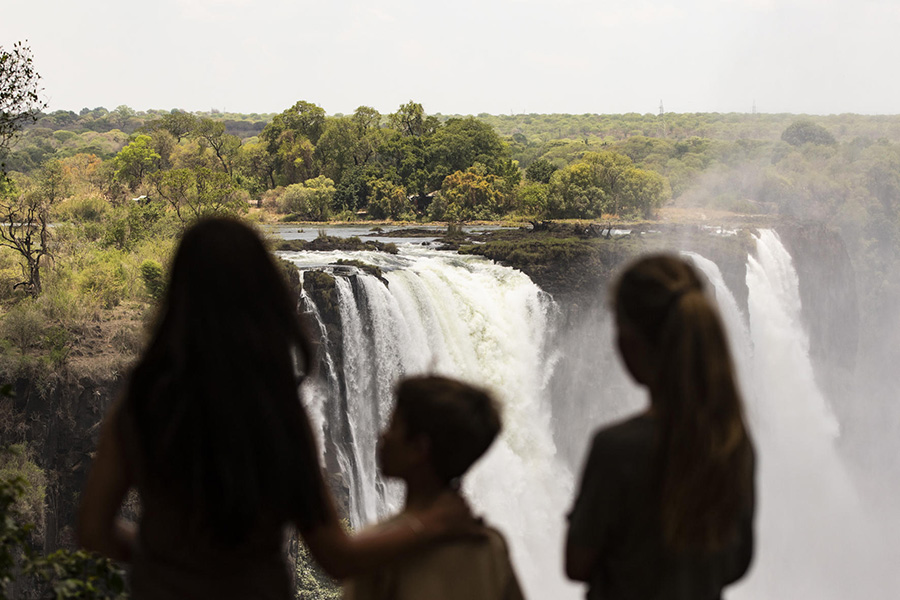
Probably the biggest attraction in Zimbabwe and the classic end-point to a safari. The Falls, traditionally known as Mosi-oa-Tunya or ‘the Smoke that Thunders', are the largest in the world when you combine their height and width. Fed by the Zambezi River, they provide all sorts of adrenalin activities like white-water rafting, visits to Livingstone Island, swimming in Devil's Pool on the precipice, and bridge swinging, bungee jumping and sunset cruises.
Dammed to supply hydroelectric power to Zimbabwe and Zambia, Kariba is fondly known as ‘the Riviera of Zimbabwe' because of the many upscale houseboats that dot its shores. It is a wonderful place for birding and Spurwing Island – named after the African spur-winged goose – is testimony to this. Spurwings are famous for diving for fish and are very social, often living in communities of up to 50 birds. Kariba is a very underrated destination and a great place for a ‘beach holiday' in the midst of safari country.
The local Shona people are thought to have built the Zimbabwe Ruins from about the 11th century, carefully dry-packing thousands of stones into intricate patterns, towers and staircases. Between the 13th and 15th centuries, at least 20 000 people lived here on a site that was 1 780 acres / 722 hectares big. It was the trading hub for the Kingdom of Mutapa or Munumatapa and is now a World Heritage Site. So important are the ruins that the country is named after them: ‘dzimba' means ‘houses' and ‘mabwe' means ‘stones' making up ‘Zimbabwe' or ‘Great Houses of Stone'.
Zimbabwe is a huge country and first-timers generally visit Victoria Falls, Hwange and Mana Pools as these have the best infrastructure and are easiest to reach. Visiting other sites in this far-flung land is trickier and only recommended for experienced travellers.
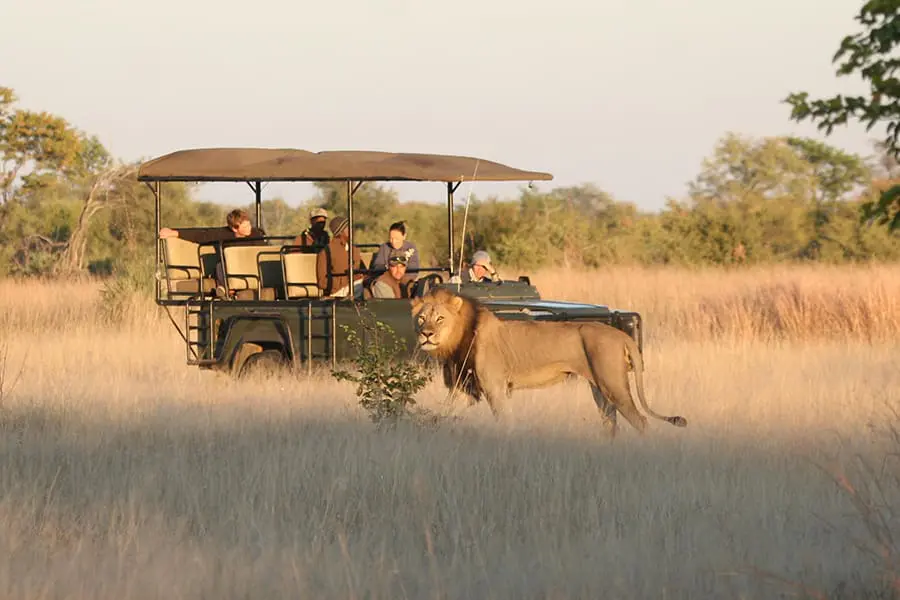
The beauty of Africa is its infinite complexity and this is equally true of Zimbabwe. The best time to go depends on where you want to go – on safari or to see Victoria Falls. Naturally, almost all travellers would like to do both, which leaves a much smaller window to see both at their best. This is because the one – the Falls – depends on rain while the other – peak-season safari – depends on the lack of rain!
The best time for a Zimbabwe safari is during the dry winter months, from about May to October. There are many reasons for this:
This time coincides, however, with the major holiday season in the northern hemisphere, making booking in advance absolutely imperative to secure accommodation and flights.
The best time to see Victoria Falls in all its glory is from about February to May, or summer to late autumn. This is because:
It is important to know that when the Falls are at their fullest and highest, they are ironically hard to see and especially to photograph, because the 500 000 litres / 132 000 gallons of water that plummet over the edge create a huge amount of mist (and the noise can be deafening, hence the traditional name Mosi-oa-Tunya or the Smoke that Thunders). If you do visit then, consider a flip in a helicopter or – if you're more daring – a microlight to truly appreciate the sheer size of the Falls and to take photos.
The strong current and high waters at this time of year make water activities like white-water rafting unsafe, so bear this in mind when you book. It will also be too dangerous to swim in Devil's Pool or to visit Livingstone Island as the water rushes furiously by. These activities are undertaken from about August to December (Low-water Season) when the levels have dropped to be safer.
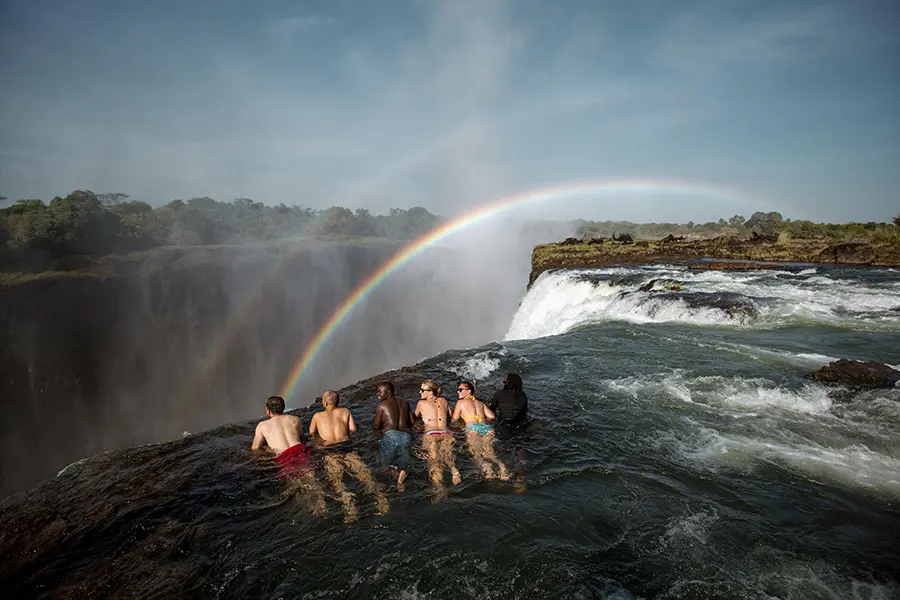
If you want to see Vic Falls when the water is still high and have a good safari, aim for May, June or July. After this, the safari will improve but the Falls will begin drying up and you won't get the full curtain of water. Before this, the Falls will be in full flood but the game watching may prove challenging to first-timers.
If you visit from September on, you may find large parts of the Falls completely dry. By October, although the safari will be excellent, the Zambian side of the Falls will be bare rock and the rest very, very reduced.
| High Season | Low or Green Season | ||
|---|---|---|---|
| About May to October | About November to April | ||
| Highest rates | Lowest rates | ||
| Need to book up to a year in advance | No need to book so far in advance | ||
| Coldest, driest weather | Hottest, wettest weather | ||
| Easiest to find and see the animals | Harder to find or see animals | ||
| Not many babies or migrant birds | Lots of babies and birds around | ||
| Most crowded | Least crowded | ||
| Vic Falls in full flood (February to July) | Vic Falls low-water season (August to January) |
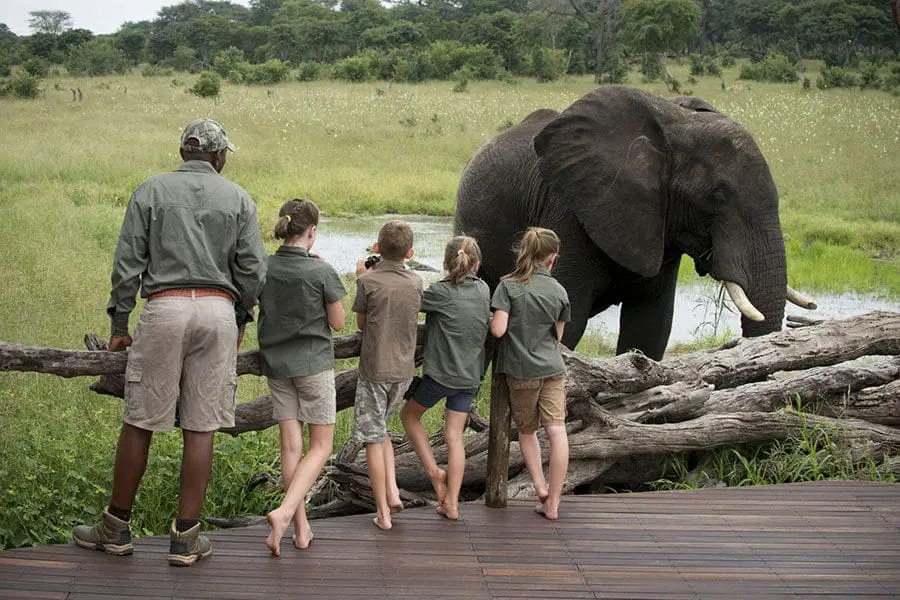
Even though we have been in the safari game since 1998, it's very hard for us to give a single figure when it comes to costs. There are so many variables to consider, such as the time of year you're travelling, how long you're staying, and whether you prefer comfortable or luxurious accommodation. This is why we don't believe in a one-package-deal-fits-all approach and prefer to consult with each client individually, using our expertise to tailor-make an itinerary from scratch.
We can, however, supply ballpark figures that help with formulating a budget. For accommodation, a Zim safari will cost you in the range of $600 to $3,250 per person sharing per night, depending on the level of comfort. We suggest working with the following:
| 4-star Comfort | 4-star Luxury | 5-star Luxury | |||
|---|---|---|---|---|---|
| Low | High | Low | High | Low | High |
| $800 | $1,200 | $1,050 | $1,600 | $2,900 | $3,250 |
| 4-star Comfort | 4-star Luxury | 5-star Luxury | |||
|---|---|---|---|---|---|
| Low | High | Low | High | Low | High |
| $600 | $650 | $650 | $800 – $1,000 | $1,200 | $1,300 – $2,000 |
IMPORTANT: The above costs are an average per person, per night, sharing a room in High and Low Season. They exclude international flights, visas and optional activities. Note that conservation fees, levies and permits are all subject to change.
All our Zimbabwe safari costs are all-inclusive, which means that meals, most drinks, park fees and taxes are included in the rate for accommodation, and you don't get any ‘surprises' when you leave. We also prefer to book and arrange excursions or activities as part of your itinerary for the same reason. It is generally pricier to stay in a private concession rather than a national park, but the benefit is that you can undertake activities like going off-road to get closer to sightings, night drives and nature walks that aren't permitted in the park.
Like most things, the more substantial your budget, the more options you will have. But even those with modest budgets can still find a way of exploring Zimbabwe – the key is to communicate openly with your consultant so that he or she can do their utmost to create the best possible trip for you.
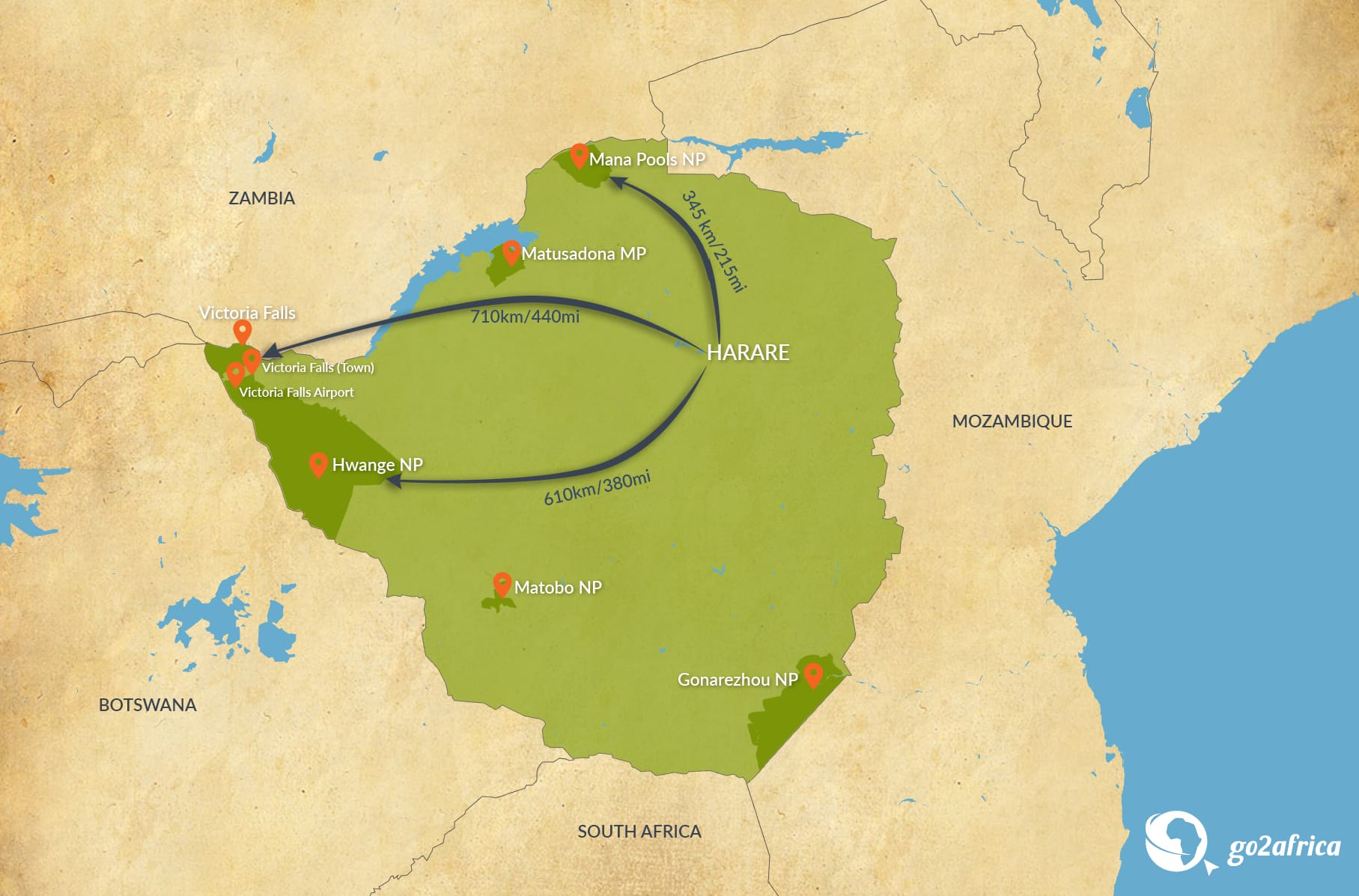
Zimbabwe is a dream safari destination but there are a few things to consider:
Most of our first-time visitors combine Victoria Falls with destinations like the Kruger National Park – which has almost guaranteed Big 5 game viewing – and the wonderful city of Cape Town in South Africa. Other first-timers will link a safari in Hwange with time at the Falls. If this is a return trip, consider going off the beaten track to places like Matobo, Gonarezhou and Matusadona.
A classic itinerary is two nights at Vic Falls, three or four nights in Hwange, and three to four nights in Mana Pools or Lake Kariba.
Remember that distances between destinations are long and that you will be taking light aircraft to get from place to place. The more full days you have in a destination, the more morning and afternoon game drives you will be able to fit in.
Unless you have plenty of funds and time, it may not be possible to see and do everything that a varied and large country like Zimbabwe has to offer. Start with your interests and preferences, and work from there. If a peak-season safari is important to you, then build your itinerary around that.
If you are interested in more unusual activities like seeing ruins or caves, then bear in mind that accommodation around these attractions is very basic and extremely limited, and there may be long driving distances if flights or airstrips aren't available. Visiting these areas will take a lot of planning so be sure to mention them upfront when consulting with your Africa Safari Expert. It is easier to include them from the beginning of your planning than to add them at the last minute.
If you want to see Victoria Falls in full flood, then it's best to start planning about a year in advance. This may seem extreme and unnecessary, but the best accommodation is limited and goes fast. If you leave it very late, you may not be able to secure accommodation at all, as this is a popular regional and honeymoon destination. Availability is a key issue in planning a thorough and satisfactory Zimbabwe itinerary.
Once you have the practicalities down – when you want to travel, what you want to spend, what you want to see and do, and who you want to go with – you can hand over all the planning, paperwork and admin to your travel consultant and go back to daydreaming about touching down in Zimbabwe!
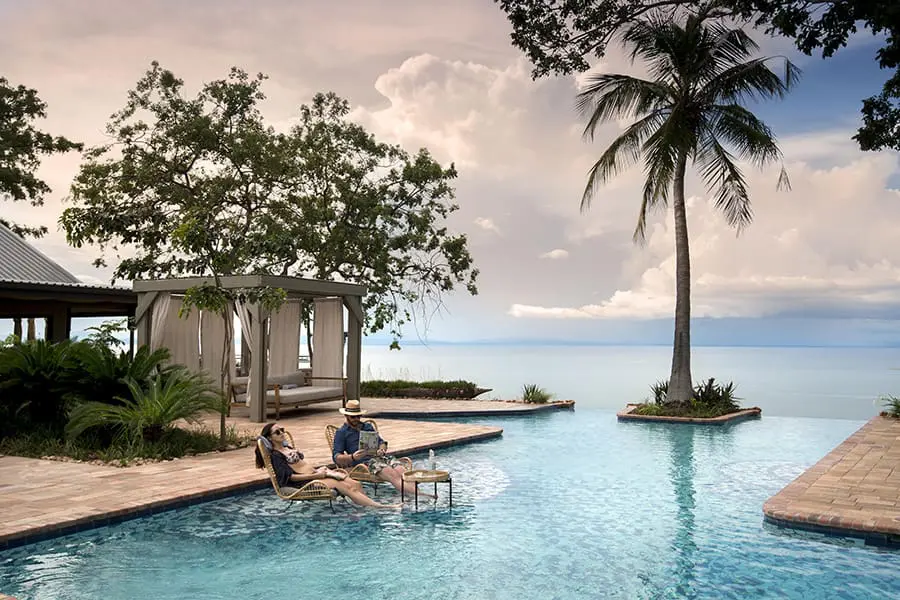
At Go2Africa, we prefer direct answers to direct questions. We are frequently asked about the political situation in the country and whether it is safe to travel there.
It is no secret that Zimbabweans have survived huge political turmoil, starting with colonisation in the 1800s. By the 1990s, then-president Robert Mugabe was desperate to hold onto power and by the early 2000s had embarked on an ambitious but ill-fated land redistribution programme to help empower ordinary Zimbabweans. Many Zimbabweans left for neighbouring countries to earn a living and those residing in rural areas were sometimes forced to turn to poaching to survive. This in turn, coupled with widespread and prolonged drought, had a negative effect on wildlife areas. What had once been called the bread basket of Africa because of its supremely fertile soil that supported vast tracts of maize and tobacco, and which was considered a top-notch safari destination, became benighted by food, fuel and cash shortages. In those conditions, safety was a serious consideration.
We are happy and confident to say that Zimbabwe has definitely come through this challenging period of the early 2000s. The new president, Emmerson Mnangagwa, has committed to undoing the excesses of Mugabe's rule and to helping the country out of recession.
Since our inception in 1998, we have kept hundreds of thousands of safari lovers safe. We do this by regularly travelling to the countries we recommend and by keeping in constant touch with our vast network of contacts on the ground. We will never send a client to a place that we would not visit ourselves, and we use only the most reputable accommodation, transfers and activity providers throughout Zimbabwe, all of which have impeccable records. We travel to Zimbabwe regularly and can say with confidence that the country is safe to visit.
It is important to remember that the safari locations are very far from Harare, the capital, and that Victoria Falls is ‘shared' with Zambia, a peaceful, stable and thriving democracy just across the Zambezi River. When you're on safari, you are hundreds of miles from Harare and we never route clients through the city. When you're on safari, you are in the hands of diligent and knowledgeable guides and lodge managers who know the country inside out – we have full confidence in them. We also provide all our travellers with a 24/7 hotline for use in emergencies that we are pleased to say very seldom actually gets used.
Zimbabwe is still a stunning safari destination and the sheer sight of Victoria Falls is one of Mother Nature's most magnificent displays. Game is making a massive comeback and investment into new and upgraded lodges is surging. Zim was once dotted with simple ‘bush camps' and 2-person tents; now lodges have private plunge pools, designer interiors and gourmet food, all of which is indicative of the confidence investors have in the country. Of course, those more rustic places remain and we take care to match you with the perfect style of accommodation you have in mind.
In a nutshell: yes, Zimbabwe is safe to visit. Thousands of people from all over the world marvel at its wildlife and natural beauty every year, and there's no reason why you can't be among them.
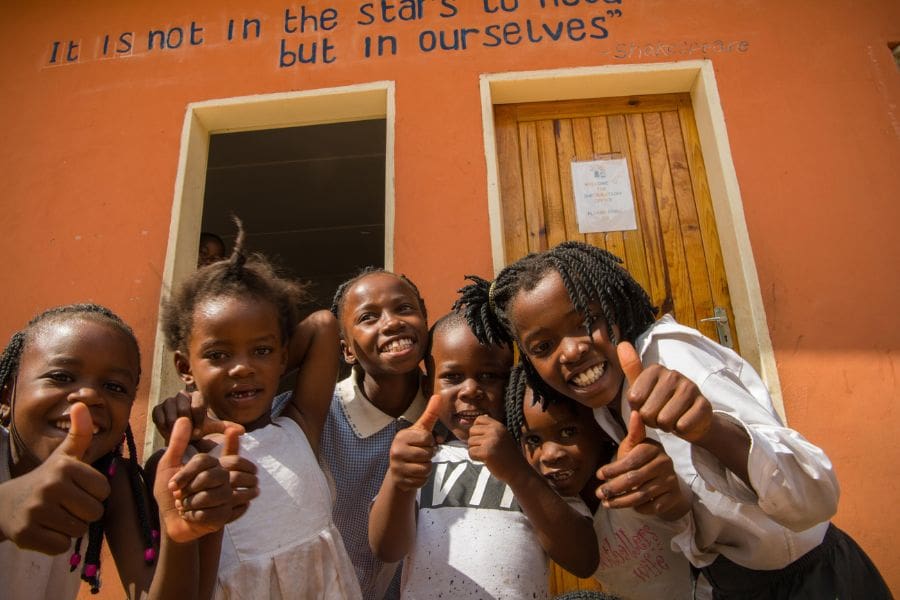
Safaris in Zimbabwe are an unforgettable experience. But nothing is more satisfying than knowing you are leaving an area better than you found it. The below Zimbabwe itinerary offers the perfect blend of luxury safari, diverse wildlife and contributing to a worthy cause:
Our African Safari Experts are equipped with over two decades of first-hand knowledge and experience exploring the continent. Get in touch and start crafting the vacation of your dreams: